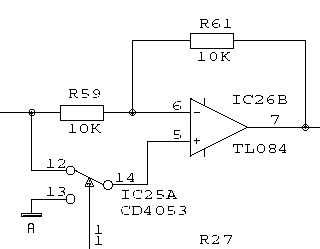niloy2k
Junior Member level 1

what is meant is demodulation?
Hi guys I previously posted here asking for a help with the noise source and I really really appreciate the help from everyone.
I am working on a project which is based on lock in amplification. Basically the main phase of the design is the phase sensitive detection where demodulation(multiplication) of two signals takes place.
For my project I have to extract a very weak signal buried in large noise. In the demodulator stage, the circuit works fine if i just multiply a simple sine wave and a square wave havin da same phase as it provides me fully rectified signal. But if I add the noise signal with the sine wave and then perform the demodulation step, the output does not turn out to be fully rectified signal.
I have tried lookin at all the specs but I cant figure out whats wrong with the procedure. Can anyone please please help me out with this ?? I will really appreaciate the help
Hi guys I previously posted here asking for a help with the noise source and I really really appreciate the help from everyone.
I am working on a project which is based on lock in amplification. Basically the main phase of the design is the phase sensitive detection where demodulation(multiplication) of two signals takes place.
For my project I have to extract a very weak signal buried in large noise. In the demodulator stage, the circuit works fine if i just multiply a simple sine wave and a square wave havin da same phase as it provides me fully rectified signal. But if I add the noise signal with the sine wave and then perform the demodulation step, the output does not turn out to be fully rectified signal.
I have tried lookin at all the specs but I cant figure out whats wrong with the procedure. Can anyone please please help me out with this ?? I will really appreaciate the help

